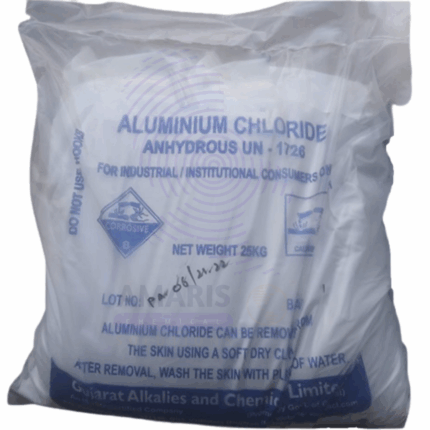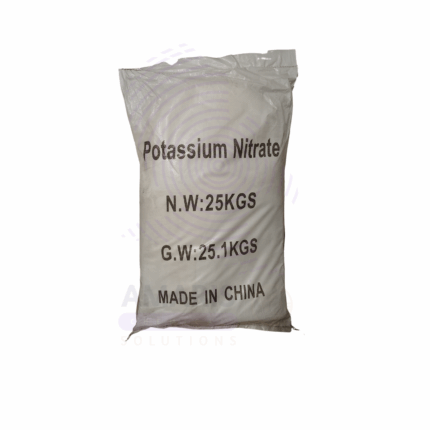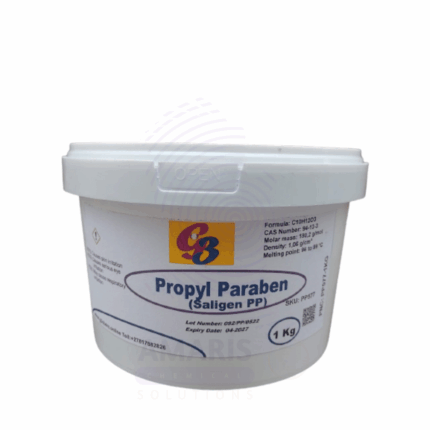Back to products


Anhydrous Aluminum Chloride
$ 8.00 Original price was: $ 8.00.$ 7.63Current price is: $ 7.63.
Amylase (Baking Enzyme)
Whatsapp Order
Amylase is a class of enzymes that catalyzes the hydrolysis of starch into sugars such as maltose and glucose. In the baking industry, amylases are widely used to improve dough handling, enhance fermentation, increase loaf volume, improve crumb softness, and extend shelf life. The enzyme is typically derived from microbial (fungal or bacterial) sources like Aspergillus oryzae or Bacillus subtilis. Commercial baking amylase products may include α-amylase, β-amylase, and glucoamylase, depending on application needs.
Description
-
Table of Contents Toggle
Uses
Primary Uses
Food & Beverage Industry – Baking
- Bread Making:
- Breaks down starch into fermentable sugars, providing food for yeast and enhancing fermentation.
- Improves oven spring and loaf volume.
- Enhances crust color through Maillard reaction by increasing reducing sugars.
- Improves crumb structure and softness.
- Pastries, Rolls, and Cakes:
- Improves dough extensibility and reduces mixing time.
- Enhances crumb texture, softness, and shelf life.
- Frozen Dough Products:
- Maintains yeast activity and sugar levels in frozen or retarded dough systems.
- Prevents sugar loss during freeze-thaw cycles.
- Flour Treatment:
- Added directly to flour in mills to standardize baking performance.
- Compensates for seasonal variations in flour starch content.
Industrial Enzyme Applications
- Beer Brewing (α- and β-amylase):
- Helps convert starches in malt to fermentable sugars during mashing.
- Improves alcohol yield and consistency in brewing.
- Malt Extract Production:
- Used to break down starches in malted barley for food ingredients and brewing.
Secondary Uses
Animal Feed Additive
- Added to animal feed to improve starch digestibility in livestock and poultry, enhancing nutrient absorption and feed efficiency.
Textile Industry
- Used in desizing of cotton fabrics by breaking down starch-based sizing agents, allowing easier removal during washing.
Paper & Pulp Industry
- Applied to reduce viscosity of starch in paper coatings and improve paper strength and printability.
Detergent Industry
- Some specialty detergents include amylase to remove starch-based stains from fabrics and kitchenware.
Bioethanol Production
- Amylase is used to hydrolyze starch in feedstocks like corn or cassava into fermentable sugars prior to fermentation.
Pharmaceutical & Diagnostic
- Used in some diagnostic kits for starch digestion and enzyme activity measurement.
Wastewater Treatment
Helps in degrading starch-based organic materials in effluent systems, improving biodegradability.
PRODUCT KEY FEATURES
1. Basic Identification Attributes
- IUPAC Name: α-1,4-glucan-4-glucanohydrolase (for α-amylase)
- Common/Trade Names: Amylase, Fungal α-Amylase, Bacterial α-Amylase, Glucoamylase
- CAS Numbers:
- α-Amylase (from Aspergillus oryzae): 9000-90-2
- Bacterial α-Amylase (from Bacillus subtilis): 9000-92-4
- Glucoamylase: 9032-08-0
- HS Code: 3507.90.00 (Enzymes for industrial use)
- Synonyms: Diastase, Liquefying Amylase, Saccharogenic Enzyme
2. Physical & Chemical Properties
- Appearance: Free-flowing powder, granules, or liquid (brownish or light tan)
- Odor: Mild fermentation odor
- Solubility: Soluble in water, insoluble in organic solvents
- Activity: Varies – usually specified in SKB, DU, or FAU units
- pH Range of Activity: Typically 4.5–7.5 (depends on enzyme type)
- Optimum Temperature:
- Fungal α-amylase: 45–60°C
- Bacterial α-amylase: 60–85°C
- Thermal Stability: Some forms are heat-stable for baking applications
3. Safety & Hazard Attributes
- GHS Classification:
- Not hazardous in diluted or properly formulated forms
- May cause allergic respiratory reactions in sensitive individuals
- NFPA Ratings:
- Health: 1
- Flammability: 0
- Reactivity: 0
- Toxicity:
- Non-toxic at use levels in food
- Inhalation of enzyme dust may cause sensitization
- Incompatibilities: Strong acids or oxidizers (may denature enzyme)
4. Storage & Handling Attributes
- Storage Conditions:
- Store in original container, tightly closed, in a cool (≤25°C), dry place
- Avoid exposure to moisture and direct sunlight
- Shelf Life:
- Powder: 12–24 months
- Liquid: 6–12 months (refrigerated preferred)
- Packaging:
- Food-grade bags, fiber drums, IBCs, jerry cans (for liquids)
- Handling Notes:
- Avoid dust formation
- Ensure proper air handling in enclosed environments
5. Regulatory & Compliance Attributes
- FDA (USA): GRAS (Generally Recognized As Safe) when derived from approved microbial strains
- EU EFSA: Approved as a processing aid or food additive under specific conditions
- FAO/WHO JECFA: Acceptable enzyme preparations from specified sources
- Labeling: May require declaration as a processing aid or enzyme preparation
- Allergen Statement: Required in some jurisdictions due to sensitization potential
6. Environmental & Health Impact
- Ecotoxicity:
- Generally considered safe to aquatic life in diluted effluent
- Biodegradability:
- Rapidly biodegradable under normal wastewater treatment conditions
- Bioaccumulation:
- No potential
- Occupational Exposure:
- Risk of respiratory sensitization in enzyme production or bulk handling
- Minimal risk to consumers in end products
- Carcinogenicity/Mutagenicity:
- Not classified as carcinogenic or mutagenic
SAFETY HANDLING PRECAUTIONS
-
Safety Handling Precautions
- PPE:
- Wear gloves, goggles, and dust masks when handling powdered enzymes
- Avoid:
- Dust inhalation, ingestion, or skin/eye contact
- Hygiene:
- Wash hands and exposed skin after handling
- Do not eat or drink in the handling area
First Aid Measures
- Inhalation:
- Move to fresh air. Seek medical help if allergic reaction or difficulty breathing occurs
- Skin Contact:
- Wash thoroughly with soap and water
- Eye Contact:
- Rinse immediately with plenty of water for at least 15 minutes
- Ingestion:
- Rinse mouth, drink water. Seek medical advice if symptoms persist
Firefighting Measures
- Flammability:
- Non-flammable, but dust may pose a combustible dust hazard in rare conditions
- Extinguishing Media:
- Water spray, CO₂, foam, or dry powder
- Special Hazards:
- If heated to decomposition, may emit carbon oxides
- Firefighter Protection:
- Use self-contained breathing apparatus (SCBA) in case of large fires
Related products
Polysorbates
Polysorbates are a class of nonionic surfactants derived from sorbitol and fatty acids, commonly used as emulsifiers, solubilizers, and dispersing agents in a wide range of industries. They improve the mixing of oil and water phases, stabilize emulsions, and enhance the texture and consistency of formulations. Polysorbates are widely used in pharmaceuticals, cosmetics, food products, and industrial applications due to their biocompatibility, low toxicity, and effectiveness at low concentrations.
Potassium Lactate
Potassium Lactate is the potassium salt of lactic acid, typically available as a clear, colorless to pale yellow liquid or solid powder. It functions primarily as a food additive, humectant, and preservative with antimicrobial properties. Widely used in the food industry, it also finds applications in pharmaceuticals, cosmetics, and industrial processes. Potassium Lactate helps improve moisture retention, extend shelf life, and enhance safety by inhibiting microbial growth.
Potassium Nitrate
Potassium Nitrate is a white crystalline salt commonly known as saltpeter. It is a key oxidizing agent widely used in fertilizers, food preservation, pyrotechnics, and chemical manufacturing. Potassium Nitrate provides essential potassium and nitrogen nutrients in agriculture and acts as a source of oxygen in combustion reactions. Its stability and solubility make it valuable across various industries from agriculture to explosives.
Potassium Sorbate FCC
Potassium Sorbate FCC (Food Chemical Codex) is the potassium salt of sorbic acid, a white crystalline powder widely used as a food preservative. It effectively inhibits the growth of molds, yeasts, and some bacteria, thus extending the shelf life of various food and beverage products. Known for its low toxicity and minimal impact on flavor, Potassium Sorbate is a preferred preservative in food, cosmetics, and pharmaceutical industries.
Povidone PVP25 USP
Povidone PVP25 USP is a synthetic polymer of vinylpyrrolidone with an average molecular weight of approximately 25,000. It is a water-soluble, non-toxic, and biodegradable polymer widely used as a binder, film former, stabilizer, and solubilizing agent in pharmaceutical, cosmetic, and industrial applications. Its excellent adhesive properties and compatibility with a wide range of substances make it essential in tablet formulations, topical products, and adhesives.
Propyl paraben
Propyl Paraben is a widely used preservative belonging to the paraben family, known for its antimicrobial properties. It is commonly employed to inhibit the growth of bacteria, mold, and yeast in cosmetic, pharmaceutical, and food products. Propyl Paraben is favored for its effectiveness, low toxicity, and compatibility with a broad range of formulations, helping extend product shelf life while maintaining safety.
Protease Baking enzymes
Protease Baking Enzymes are specialized enzymes that catalyze the breakdown of proteins into peptides and amino acids. In baking, these enzymes improve dough handling, texture, and volume by modifying gluten structure and enhancing gas retention. They help produce softer crumb, better crust, and increased shelf life of baked goods. Protease enzymes are essential for consistent quality and efficiency in commercial baking operations.
Shellac
Shellac is a natural resin secreted by the lac insect, primarily found in South Asia. It is processed into flakes or powder form and dissolved in alcohol to create a versatile film-forming agent. Shellac provides excellent adhesion, gloss, and moisture resistance, making it widely used as a wood finish, food glaze, and pharmaceutical coating. It is valued for its natural origin, biodegradability, and safe use in food and cosmetic applications.


 Preservatives(food)
Preservatives(food) Flavor Enhancers
Flavor Enhancers Acidulants
Acidulants Sweeteners
Sweeteners Antioxidants
Antioxidants Colorants(food)
Colorants(food) Nutraceutical Ingredients (food)
Nutraceutical Ingredients (food) Nutrient Supplements
Nutrient Supplements Emulsifiers
Emulsifiers
 Collectors
Collectors Dust Suppressants
Dust Suppressants Explosives and Blasting Agents
Explosives and Blasting Agents Flocculants and Coagulants
Flocculants and Coagulants Frothers
Frothers Leaching Agents
Leaching Agents pH Modifiers
pH Modifiers Precious Metal Extraction Agents
Precious Metal Extraction Agents
 Antioxidants(plastic)
Antioxidants(plastic) Colorants (Pigments, Dyes)
Colorants (Pigments, Dyes) Fillers and Reinforcements
Fillers and Reinforcements Flame Retardants
Flame Retardants Monomers
Monomers Plasticizers
Plasticizers Polymerization Initiators
Polymerization Initiators Stabilizers (UV, Heat)
Stabilizers (UV, Heat)
 Antifoaming Agents
Antifoaming Agents Chelating Agents
Chelating Agents Coagulants and Flocculants
Coagulants and Flocculants Corrosion Inhibitors
Corrosion Inhibitors Disinfectants and Biocides
Disinfectants and Biocides Oxidizing Agents
Oxidizing Agents pH Adjusters
pH Adjusters Scale Inhibitors( water)
Scale Inhibitors( water)
 Antioxidants(cosmetic)
Antioxidants(cosmetic) Emollients
Emollients Fragrances and Essential Oils
Fragrances and Essential Oils Humectants
Humectants Preservatives
Preservatives Surfactants(cosmetic)
Surfactants(cosmetic) Thickeners
Thickeners UV Filters
UV Filters
 Fertilizers
Fertilizers Soil Conditioners
Soil Conditioners Plant Growth Regulators
Plant Growth Regulators Animal Feed Additives
Animal Feed Additives Biostimulants
Biostimulants Pesticides (Herbicides, Insecticides, Fungicides)
Pesticides (Herbicides, Insecticides, Fungicides)
 Active Pharmaceutical Ingredients (APIs)
Active Pharmaceutical Ingredients (APIs) Excipients
Excipients Solvents(pharmaceutical)
Solvents(pharmaceutical) Antibiotics
Antibiotics Antiseptics and Disinfectants
Antiseptics and Disinfectants Vaccine Adjuvants
Vaccine Adjuvants Nutraceutical Ingredients (pharmaceutical)
Nutraceutical Ingredients (pharmaceutical) Analgesics & Antipyretics
Analgesics & Antipyretics
 Analytical Reagents
Analytical Reagents Solvents(lab)
Solvents(lab) Chromatography Chemicals
Chromatography Chemicals Spectroscopy Reagents
Spectroscopy Reagents microbiology-and-cell-culture-reagents
microbiology-and-cell-culture-reagents Molecular Biology Reagents
Molecular Biology Reagents Biochemical Reagents
Biochemical Reagents Inorganic and Organic Standards
Inorganic and Organic Standards Laboratory Safety Chemicals
Laboratory Safety Chemicals Specialty Laboratory Chemicals(Special Laboratory Equipment)
Specialty Laboratory Chemicals(Special Laboratory Equipment)
 Demulsifiers
Demulsifiers Hydraulic Fracturing Fluids
Hydraulic Fracturing Fluids Scale Inhibitors(oil)
Scale Inhibitors(oil) Surfactants(oil)
Surfactants(oil) Drilling Fluids
Drilling Fluids
 Dyes and Pigments
Dyes and Pigments Bleaching Agents
Bleaching Agents Softening Agents
Softening Agents Finishing Agents
Finishing Agents Antistatic Agents
Antistatic Agents
 Admixtures
Admixtures Waterproofing Agents
Waterproofing Agents Sealants and Adhesives
Sealants and Adhesives Curing Compounds
Curing Compounds Concrete Repair Chemicals
Concrete Repair Chemicals Anti-Corrosion Coatings
Anti-Corrosion Coatings
 Surfactants(cleaning)
Surfactants(cleaning) Builders
Builders Enzymes
Enzymes Solvents (Cleaning)
Solvents (Cleaning) Fragrances
Fragrances
 Electronic Chemicals
Electronic Chemicals Catalysts
Catalysts Lubricants
Lubricants Photographic Chemicals
Photographic Chemicals Refrigerants
Refrigerants Automotive chemicals
Automotive chemicals Pyrotechnic Chemicals
Pyrotechnic Chemicals
 Biodegradable Surfactants
Biodegradable Surfactants Bio-based Solvents
Bio-based Solvents Renewable Polymers
Renewable Polymers Carbon Capture Chemicals
Carbon Capture Chemicals Wastewater Treatment Chemicals
Wastewater Treatment Chemicals
 Pigments
Pigments Solvents(paint)
Solvents(paint) Specialty Coatings
Specialty Coatings Binders/Resins
Binders/Resins Additives
Additives Driers
Driers Anti-Corrosion Agents
Anti-Corrosion Agents Functional Coatings
Functional Coatings Application-Specific Coatings
Application-Specific Coatings
 Fresh Herbs
Fresh Herbs Ground Spices
Ground Spices Whole Spices
Whole Spices Spice Blends
Spice Blends Dried Herbs
Dried Herbs
 Leavening Agents
Leavening Agents Dough Conditioners
Dough Conditioners Flour Treatments
Flour Treatments Fat Replacers
Fat Replacers Decoratives
Decoratives Preservatives(baking)
Preservatives(baking)
 Plasticizers & Softeners
Plasticizers & Softeners Reinforcing Agents
Reinforcing Agents Adhesion Promoters
Adhesion Promoters Vulcanizing Agents
Vulcanizing Agents Antidegradants
Antidegradants Blowing Agents
Blowing Agents Fillers & Extenders
Fillers & Extenders Accelerators & Retarders
Accelerators & Retarders























